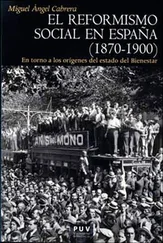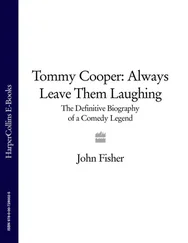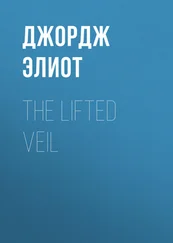And the Desert Shall Blossom (1991), her only published novel, is a study in how creativity offers different perspectives to historical events. Her fictional recollection of the Jensen family sketches up a general overview of Mormonism as such, but it also provides a valuable portrait of the Great Depression and the individual stories that are usually obliterated in the capitulation of mainstream history. Her two collections of short stories, The School of Love (1990) and Parting the Veil: Stories from a Mormon Imagination (1999), illustrate how a commitment to denouncement and defense can be valuable and profitable when sincere and undertaken without demagoguery. The first of these collections deals with feminist themes while the second relies on Mormon folklore, but both induce a new perspective from which to approach recurrent issues in Mormon culture and in a broader context. How I Got Cultured: A Nevada Memoir— Barber’s first autobiography—contains a good display of these qualities, both in terms of how she faces life and how she uses the pen. Barber plays with the ambivalence she felt as an adolescent growing up in Las Vegas. Her coming-of-age is framed by the two different lifestyles available to her: the one centered upon popular culture and the glamour of Las Vegas; and the one promoted by the Mormon Church. This conflict between the latent attraction of the possibilities of a larger world; and the shelter, security and sense of community offered by the Mormon Church—which seems to be jeopardized by the first one—is also developed in Raw Edges: A Memoir (2009), her second and relatively recent published memoir.
The awards and recognition gained by the publication of these works is not the main factor with which to judge a study of such range and ambition. The underlying fact to consider in this regard is that her work is able to “stand scrutiny” (Seshachari 25) from different literary perspectives and criticisms. I chose Barber over other, more commercially successful, Mormon writers because her understanding of the act of writing allows for a certain degree of complexity both to a singular analysis of the author’s oeuvre, and to my intention of placing her work in the context of a more general body of literature, that of Mormon literature:
What congenital burdens have been placed inside or upon you? What responsibilities do you have of which you are unaware? Maybe your idea of responsibility is unconscious or unknown to you. Maybe your sense of responsibility is a gut reaction to the things you’ve been taught and don’t even realize you are living by. (Barber, Writing xviii)
Barber writes with an open heart. She is intimate and straightforward. Words throb; passionate syntax elaborates the narrative; her characters moisten the pages when they cry; you can listen to them laughing if you come close to the lines. Her mistakes and her virtues swing rhythmically in a candid teeter-totter. Barber manifests probity. She loves and respects the act of writing as much as she loves and respects life and people. All of these considerations, rather than mere praise, come to represent properties of her fiction. Her literature shows that she understands the act of writing as a valuable but responsible exercise of self-awareness and interrogation. It is both confidential and undisguised: she casts a wide net through her heart only to broadcast it in her books. In this paradoxical, poignant drive, I find another reason, as I will try to show now, for thinking that Barber’s writing is the right departure for approaching Mormon literature. Besides, these features lead me to the conviction that Barber’s voice deserves to be heard within the framework of contemporary literary criticism.
Literature has repeatedly been performed as an opportunity for self-definition. It has, at least, been employed in both prose and poetry as a profitable implement with which to sketch individual definitions, whether disguised, or with the confessional accent of biographies. Barber’s writing is a literary search for identity: “[Y]ou want to use your gift of imagination. You hope it’s possible to lift your experience from its limited boundaries and transform it into a unique bloom of perception” (Barber, Writing xxii). But this search is never easy. Barber’s identity is composed of different elements, some of which incorporate tensions and conflicts that are augmented by Barber’s own awareness of that complex balance. Joanna Brooks defines Mormon identity as “[a] historically contingent, highly contested, and perpetually tenuous construct” ( Genealogy 293). She develops a theory that many Mormons who are dismissed from the official and institutional recognition of Mormonism rely on ethnic elements to conserve their condition as Mormons:
Given the rise of Mormon neo-orthodoxy and the growth of the worldwide church, ethnic rather than institutional Mormon identities have become a refuge for those who find themselves outside the narrowing bounds of orthodox Mormonism—especially liberals, intellectuals, feminists, and gays and lesbians. For these marginalized Mormons, identity is not necessarily maintained through the cultural practices associated with the programs of the institutional church. Rather, what provides many marginal Mormons in the contemporary American West with a continuing sense of identity is our deep, intractable, and distinctively Mormon family histories. Our genealogies root us in Mormonism, however uncertain our relationships to the present and future institutional church may be. (Brooks, Genealogy 291)
Barber’s approach to her past, and her search for identity, is full of complexity. It is true that in Barber’s literature that “dynamic relationship” that Brooks places “between institutional and individual histories” ( Genealogy 293) can be observed. That tension between a personal concept of self related to Mormonism through “memory, desire, faith, discourse, performance, and community” (Brooks, Genealogy 293) and that other one, established and regulated by the Church, surfaces in Barber’s literary production. Brooks may be making reference to how Mormon identity—or the way Mormons have been perceived in the wider context of the American West—has progressed from a mere religious constituency to a quasi-ethnic community that relies on Mormon experience of historical facts that could be approximated from different angles. In Mormonism, what begins as a religious community turns into a cultural and social reality that is reinforced by the community’s movement westward and the subsequent institution and birth of a new settlement in the desert, a movement that seems to uncover legendary, mythical, unreal undertones, but which can also be approached as a factual illustration of how the Mormons became a tight-knitted community.
Consequently, the conflicts between individuality and community become complicated by the religious implications and the historical weight of a tradition that makes identity both a personal and a communal predication. This is Barber’s natural place. When Brooks addresses the challenge to “find a way of establishing authority and securing identity as a Mormon woman, independently of institutional sanction” (Brooks, Genealogy 296), Barber goes further, widening this challenge to include higher realms, broader spaces, and more complex borders. Rather than trying to find the answer whether to embrace or reject apparently opposite sides, Barber wants to resolve the paradox, heal the conflicts, and reach a new balance with which to undo the division. She proposes a dialogue between the extremes through the elaborated realm of possibilities provided by literature: an inevitable impulse. In the words of Terry Tempest Williams: “[P]aradox is life. It’s the same thing as balance. You can’t have one without the other. There’s always the creative third, which is where possibility lies” (Austin, Voice 44).
Читать дальше












